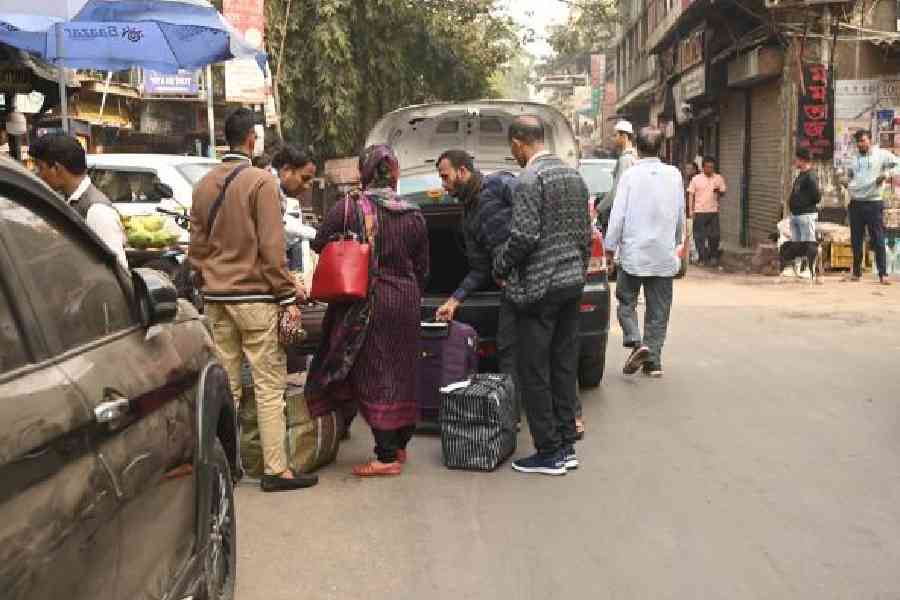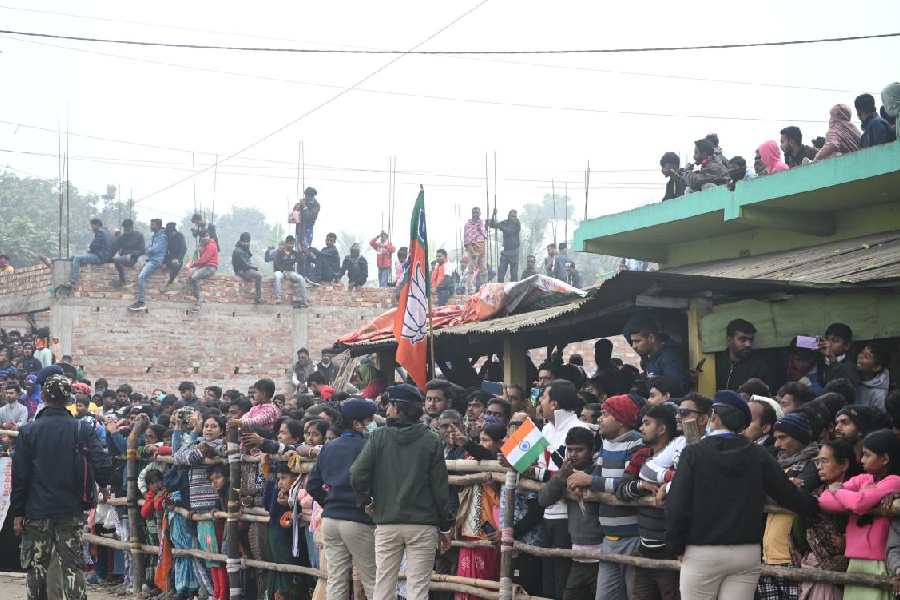 |
| A modular operating theatre |
Surgery at five government hospitals in the state would be world class six months from now.
The Nitish Kumar government has planned what can be said the first such step in the eastern India: set up six modular operating theatres (OTs) in six medical colleges.
The decision of the state health department assumes importance in the context that not even a single government hospital in the state has modular OT facility.
All of them are running with normal OTs, which do not have state-of-the-art facilities like a modular OT.
“Modular OT is type of OT in which all the equipment hang from the ceiling. This means that all the equipment do not have any connection with earth reducing the chances of infection by 90 per cent. A modular OT is an OT of high quality. One of the aspects of modular OTs is that it has different zones — protective, clean, aseptic and disposable. Patients have to move to the different zones as per their condition,” said Amar Kant Jha Amar, superintendent, Patna Medical College and Hospital (PMCH).
Health department additional secretary R.P. Ojha confirmed to The Telegraph on Wednesday that the department had decided to set up modular OTs at the six medical college and hospitals.
“According to the plan, while two modular OTs are going to come up at Patna Medical College and Hospital, one modular OT would be set up at Nalanda Medical College and Hospital (Patna), Anugrah Narayan Medical College and Hospital (ANMCH), Sri Krishna Medical College and Hospital (Muzaffarpur), Darbhanga Medical College and Hospital (Darbhanga) and Jawaharlal Nehru Medical College and Hospital (Bhagalpur). We are not going to make new modular OTs rather we are going to change the existing OTs into modular ones,” said Ojha.
In many cases, a patient’s hospital stay gets longer because of infection acquired from the OT during or after surgery. A modular OT reduces chances of infection. Less chance of infection would mean less antibiotics for patients after the surgery. In the West, where all OTs are of steel, doctors prescribe low-grade antibiotics before or after surgery as the chances of infection are minimum, said a doctor.
Sources in the health department said Bihar Medical Services and Infrastructure Corporation Limited would be assigned the task of the changeover. About the timeframe to complete this job, Ojha said the department had decided to complete this work within the next six months. “Soon, Bihar Medical Services and Infrastructure Corporation Limited would issue tenders in this regard and a firm would be selected to carry out the work,” added Ojha.
The heads of the medical college and hospital expressed happiness over the decision of the health department. “The best thing about modular OT is that it’s almost infection-free unlike normal OTs. I am happy that the health department has taken this decision,” Amar added.
The health department is looking very ambitious about its plan of the construction of the modular OTs at the medical college and hospitals but doctors of the premier health hub are sceptical about their plans.
“There are around 15 OTs at the PMCH and all are in very poor condition. Most of the surgical equipment have become 14-15 years old and are not in a condition to use. There is no bioengineering department to repair the defunct machines. When proper maintenance of OTs is not being done, what would happen to the new modular OTs, one can easily understand,” said a senior doctor of PMCH, who did not wish to be named.
That the proper maintenance of the OTs is not being done at PMCH is a known fact. Another source said: “In October last year, two patients had a miraculous escape at Patna Medical College and Hospital after a part of roof of the operating theatre-4 fell when they were being operated upon. The incident occurred at the Rajendra Surgical Block of PMCH when a part of the roof along with some portion of the false ceiling of the operating theatre-4 fell. The patients who were operated upon in the OT-4 and their attendants were in shock.”
The Telegraph had earlier highlighted the poor condition of the OT-4 at the Rajendra surgical block of PMCH in its October 22, 2013 edition last year when a part of the ceiling of OT-4 had caved in.
FUTURE PERFECT
GOVT PLAN
Changing existing OTs into modular ones at six medical college and hospitals:
Patna Medical College and Hospital
Nalanda Medical College and Hospital
Sri Krishna Medical College and Hospital
Jawaharlal Nehru Medical College and Hospital
Anugrah Narayan Medical College and Hospital
Darbhanga Medical College and Hospital
IN A NUTSHELL
Joint-less uniform sealed non-porous cleanable surface
Controlled environment
Uniform air and light distribution
Avoids bacteria contamination
Prevents micro-organism growth among patients
Advantages of speed of construction and maintenance
Allows future expansion and modernisation in line with developments in surgical techniques
OT ZONES
Protective zone: An entrance area for patients, staff and supplies where normal hospital standard of cleanliness is applied and where normal everyday clothes can be worn. In order to pass between the protective and clean zone, everything must undergo a system of transfer. A strict cleaning routine is applied in this area
Clean zone: Laminar airflow machine helps keep the air free from bacteria and virus
Aseptic zone: Where instruments need to undergo sterilisation. All staff who might handle exposed instruments must be gowned
Disposable zone: All exposed instruments be it used or unused, pathological specimens, lotions and solid linen are passed from a theatre to a disposable corridor and are returned for cleaning, sterilising or any other necessary process
IDEAL COMPONENTS
Wall panels: Stainless steel anti-bacterial colour-coated wall panels. The round corners of walls, floor and ceiling help maintain laminar flow and are easy to clean, special antibacterial sealant in the joints to ensure hygiene
Plenum unit: Known as laminar airflow, it contains a blower, a plenum and high-efficiency air filter. It is installed to ensure airflowlCeiling pendants: These pendants are installed in the operating theatres in order to facilitate them during the surgical operations
Pressure relief damper: This damper is highly reliable to avoid cross-contamination of clean and dry area air
OT control panel: Designed on a membrane type and installed at the wall of the operating theatres in order to get exact control of various functions
OT floor: Only high quality antibacterial rubber flooring used. Rubber flooring is stain-proof, easy to clean and most importantly keeps it anti-static
Lights: High quality shadow-less lights to in-built wide range OT camera system useful for communicative TV solutions for documentation, teaching and consultation
LED X-ray view box: Each panel accommodates up to one 14-inch-17-inch X-ray
Waterproof floor sockets for OT tables: Ideal for our modular OT as sterility and durability utterly important
COST FACTOR
Rs 8.75 crore
TIME TO FINISH
Six months










